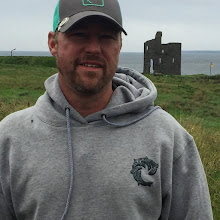As I start this post I'm on the Orange line of the Metro heading home from Transparency Camp 2010. I timed my arrival almost exactly with that of the train using an iPhone app. Now I'm typing on a super-powerful laptop with a huge display. Many Metro stations have 3G access and even though I don't tether my phone to my computer to use 3G on my laptop, I'm sure it can be done. I have nearly all of the comforts of the digital age at my disposal nearly all of the time.
I often use these tools to stay in touch with what is happening in and around my community, my local and state governments, and the federal government. I use access to Web sites, data, and social networks to stay informed and engaged. These tools offer me many choices of how much info I want to consume and how much I feel like engaging.
But what can people who don't have these resources do to be informed and participate? What choices do they have for receiving information and offering feedback? So much of Gov 2.0 and open government relates to the Web that we must be careful not to exclude those who lack digital resources.
This topic came up in multiple sessions at Transparency Camp and we generated some good ideas (we think) on how to address this issue responsibly. One idea in particular that resonated was placing LED message boards around town to broadcast key indicators, initiatives, and citizen feedback.
The basic idea is to place LED signs at heavily trafficked locations. These signs would display information about the city in which people are most interested. Some of this content would be generated the city and some of the content would be generated by citizens. Information, especially that generated by citizens, would vary somewhat by neighborhood.
On the participation side of the conversation the minimum barrier to entry would be a mobile phone. Anyone who can send a text message can contribute. Of course, there would be other ways to contribute. On the information side of the equation would be these message boards.
This would be a way for people to simultaneously tell their city what they want and to see what the city is getting by way of feedback.
There is plenty of reason to think this can be effective, too.
But before I go on, I need to add some context. This all came up during a session I facilitated called "Local Government Transparency." In the beginning of the session I gave several examples of transparency happening at the local level. One example was Localocracy. Hart Rossman quickly pointed out that, while I'm able to easily cite these examples, most people hardly know what I'm even talking about. The point being: we need to make this relevant to the vast majority of people who aren't aware of what's going on in this space.
Keying on that, Bryan Sivak, CTO of Washington, D.C., shared with us his concerns about the "digital divide" in his city. In the poorest wards in D.C., broadband Internet access is about 30%. The point being: we can make all the cool open data and participation websites we want, but we won't be serving key constituencies in his city if those people can't access these online resources. After some back and forth a gentlemen, whose name regrettably escapes me at the moment made a reference that reminded me very much of "The Blackboard Blogger of Monrovia," Alfred Sirleaf. Alfred is not just dealing with a digital divide. He has customers who are not literate. Still, he manages to provide useful information about what matters around them.
After some back and forth a gentlemen, whose name regrettably escapes me at the moment made a reference that reminded me very much of "The Blackboard Blogger of Monrovia," Alfred Sirleaf. Alfred is not just dealing with a digital divide. He has customers who are not literate. Still, he manages to provide useful information about what matters around them.
At lesser extremes we see other examples of this idea already working. Metro transit signs are one great example.
What else do people want to know about their city that can be easily provided on on a billboard in the public square?
It's worth noting that we don't necessarily need government to provide (and maintain) the billboard. Alfred Sirleaf makes a living doing what he does. People who visit his blackboard buy goods from him. We probably need government to issue permits for signs in public spaces. Then again, What if food vendors in D.C. hung LEDs on their carts?
We do need from government data that is open and accessible so that it can be easily used by anyone at low or no cost. Given this and a touch of inspiration from Alfred Sirleaf, maybe we can succeed at engaging citizens in their own government in ways that are widely accessible.
Post Script:
Gwynne Kostin pointed out the next day, that the digital divide is as much cultural as it is economical. There are plenty of people who aren't resource constrained who are nonetheless struggling with relevance of transparency and open government in their lives.
Thank you to Erik Hersman for the image of Alfred Sirleaf
Monday, March 29, 2010
Transparency and the Digital Divide
Subscribe to:
Post Comments (Atom)


No comments:
Post a Comment